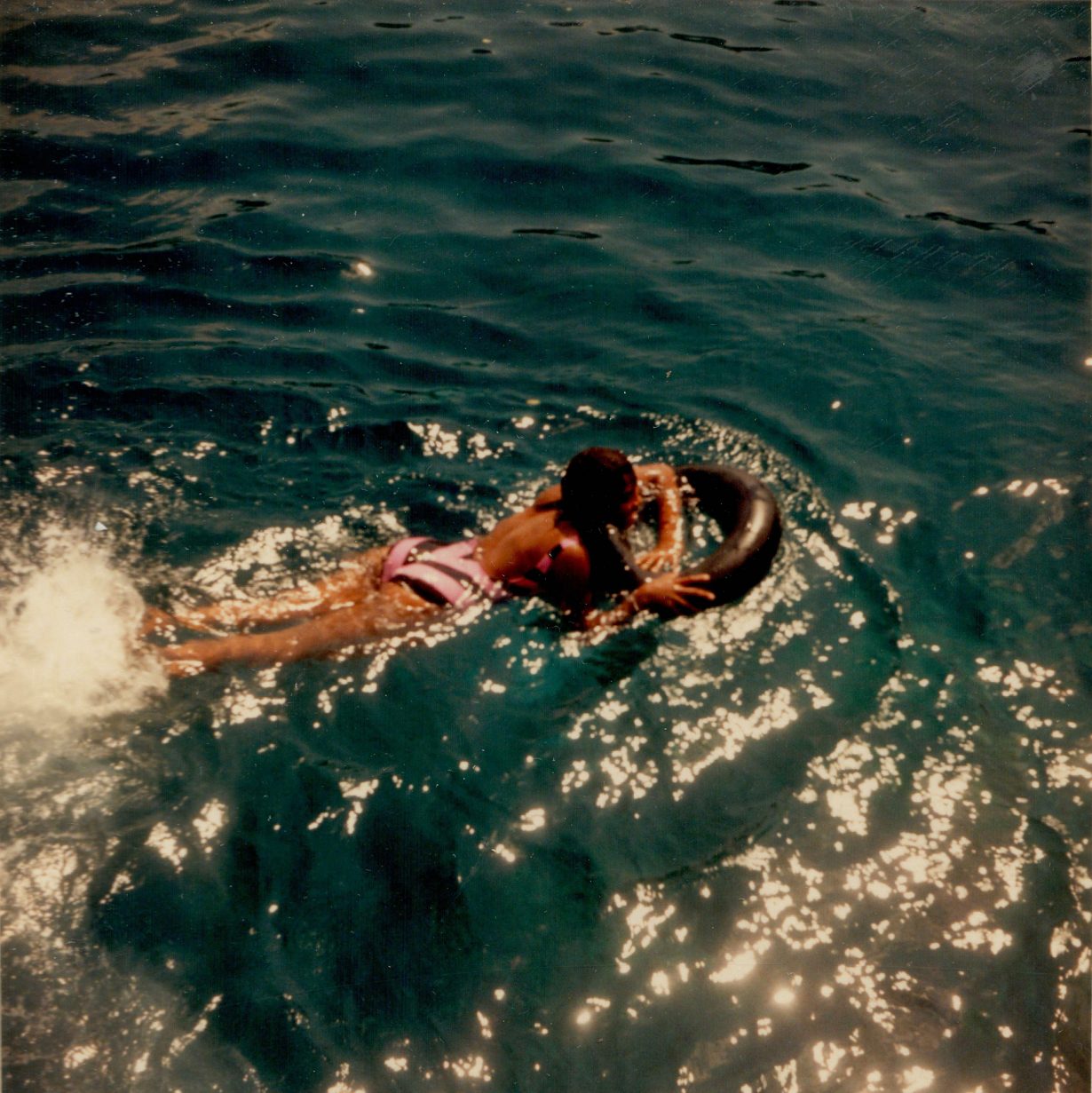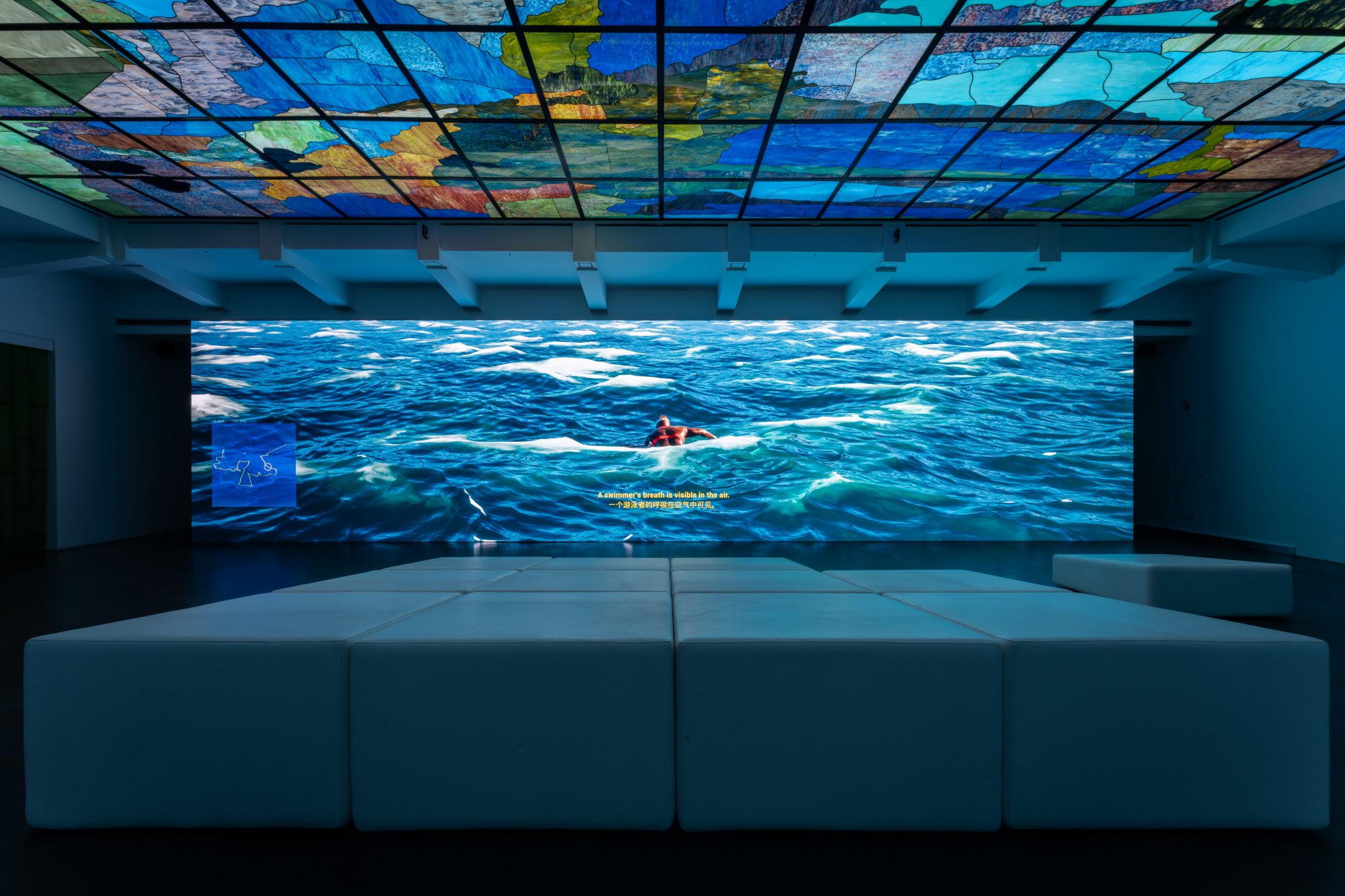‘How does a Black American, raised on the edge of the Pacific, move through the ocean to reach Shanghai?’, the artist asks in a new show at Rockbund Art Museum
Spread out across three floors, American artist Rindon Johnson’s exhibition is a reflection on time and space. Best Synthetic Answer, which features a series of newly commissioned works, centres around a project to cross the Pacific Ocean from his hometown, San Francisco, to Shanghai. The Pacific Ocean covers a third of the earth’s surface. To carry out this enterprise (which riffs on colonial-era seafaring), one would need a 12-metre boat, three experienced crew members and one-and-a-half months of time to spare – provided you travel at full speed all the way. At least this is what the artist was told by a sailing expert when they discussed his project. Their recorded conversation provides the introduction to this exhibition, which, in turn, serves as a launchpad for an attempt to wade through the Pacific’s fraught history.
Stretching across the top floor of the multi-storey museum is Language is a virus or Between Immerwahr and me… (all but one work 2024), a rectangular oceanic map made of Tiffany stained glass that turns what is in fact a mezzanine into a full floor. Coloured in aquatic hues and patterns that echo watery ripples, the map is patchy, like sections of a Google Earth map that have been photographed at different times then joined into a whole. Viewed from above, it hovers at the centre of the floor like a prop in a military command room, inviting one to survey the expanse of the ocean and ponder the challenge and ambition of traversing it.
The exhibition title references the way in which large language models such as ChatGPT generate answers based on information fed into their databases. This process means that the resulting responses only mirror (more or less) what’s being asked. For Johnson, whose works often explore how language both captures and evades truth, what’s at stake in the exhibition is a series of questions that invite us to consider how both the Pacific Ocean and human identities are entangled in complex geopolitical enterprises: ‘How does a Black American, raised on the edge of the Pacific, move through the ocean to reach Shanghai?’ ‘…[O]n what levels am I also responsible for this destruction [of land and people]?’

Initially conceived as a sailing journey to be carried out in real life, the project was ultimately realised (for safety reasons as much as anything else, we are led to believe) via a rendered, silhouetted avatar of Johnson-as-swimmer, who traverses the Pacific in real time (seven months: the duration of the exhibition). One floor down from the Tiffany glass, Best Synthetic Answer #1: Crossing… is presented on an LED screen mounted across an entire wall. Its full title, all 584 words, lists the GPS coordinates of landmasses on Avatar Johnson’s route, which follows America’s imperial reach (… Hawaii, 19.8968°N, 155.5828°W, Johnston Atoll, 16.7290°N, 169.5346°W…). In a corner of the screen a diagram indicates Avatar Johnson’s current location, although, in the main image, the ocean itself remains nondescript, punctuated only by plastic rubbish that occasionally drifts across the screen. As the figure repeats a clumsy, glitchy breaststroke, it exudes a Sisyphean sense of futility, only strengthened by its dogged perseverance. Sunlight leaking through the translucent Tiffany glass immerses the space in a deep, sentimental blue.
While the video might not really help chart the Pacific Ocean, it does function as a map of sorts for the exhibition. Locations along the avatar’s swim route serve as indexes for seven video-essays in the next room. When I visited he was leaving Midway for Tahiti, in French Polynesia, and on view was Best Synthetic Answer #5…, which explores the United States’s exploitation of ‘guano islands’, designated in the 1856 Guano Islands Act as uninhabited islands containing guano deposits that US citizens were allowed to occupy (among the closest to Avatar Johnson at this point in his journey might have been Johnston Atoll, the coincidence of an almost-shared name itself telling of how white Anglo-Saxon folks were able to claim bodies and lands). At a time when synthetic fertilisers had not yet been invented, guano was collected in large amounts to be used on American farmland, often nurturing the crops and wealth produced by enslaved African Americans. Entangled in this story are tales of the extractivist reaping of natural resources, racist management of land and labour, and the censorship, followed by appropriation, of cultural traditions for the benefit of capitalist exploitation (contemporaneous with the development of guano-related occupations, the Hawaiian Indigenous tradition of surfing was first banned, then turned into a tourist industry). We’re reminded how the ambition embodied in a maritime atlas brought more trauma than triumph.

The exhibition concludes with a slideshow of photographs from the artist’s personal archive (Dark blue of the water…), in which images of Johnson family vacations in Hawaii are projected onto a wall in a darkened space. Here, there’s a personal relationship to the ocean, one that is filled with domestic joy, empowerment as a consuming tourist and pride in these proofs of his working-class family’s upward mobility, which, as the artist acknowledges in the exhibition text, is itself predicated upon America’s colonial exploits.
Outside the windows of the Rockbund’s foyers, one can see the Huangpu River, which flows into the River Yangtze, which connects China’s inlands with the Western Pacific. The institution, too, has its own relationship with the seascape. Occupying the art deco building of the former Royal Asiatic Society (originally the Shanghai Literary and Scientific Society, founded by American missionary Elijah Coleman Bridgman), it sits on a strip of shore known as ‘the Bund’ – a term borrowed from Hindi via Britain’s colonial maritime trade route. Shanghai, too, was subjected to the transformations brought by the International Settlement after the First Opium War – originally a fishing village, it became a metropolitan haven only after being concessioned as a treaty port in 1842. It now has over 125 docks and numerous businesses hyping investments in Southeast Asia and Africa, following the Chinese government’s 2013 Belt and Road initiative, the maritime route of which stretches from Hanoi and Jakarta to Colombo and Nairobi. Since the 2018 China–US trade war and the pandemic years during which Shanghai suffered one of the world’s harshest lockdowns, it has been harder for China’s general public to imagine an identity for themselves outside of China’s land mass. Johnson’s ‘long march’ through the Pacific to Shanghai, then, provides an alternative, realigning the institution and the city with bigger geopolitical networks.
Best Synthetic Answer at Rockbund Art Museum, Shanghai, through 6 April
